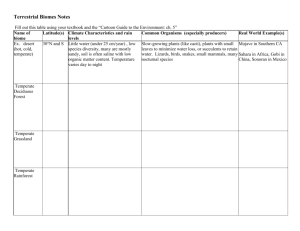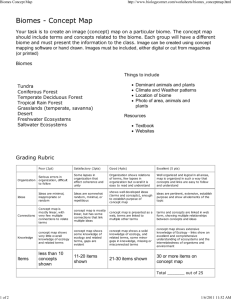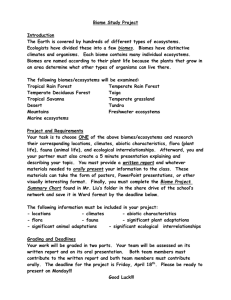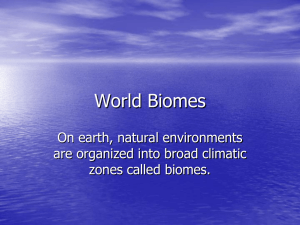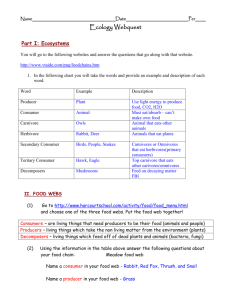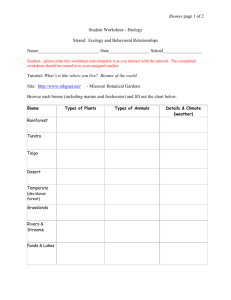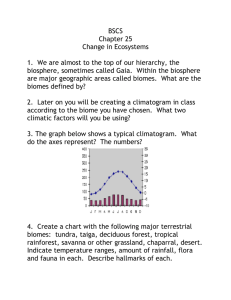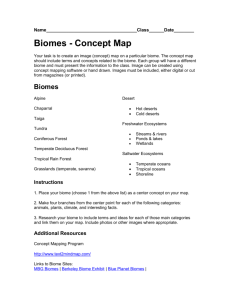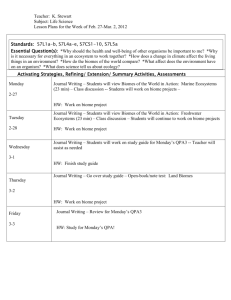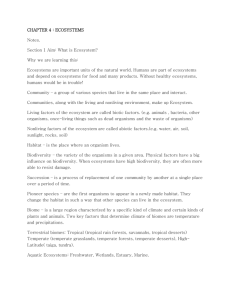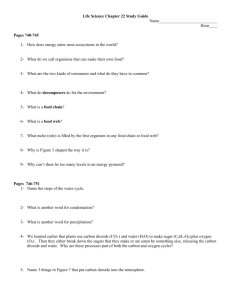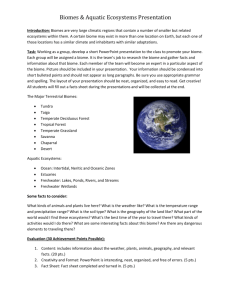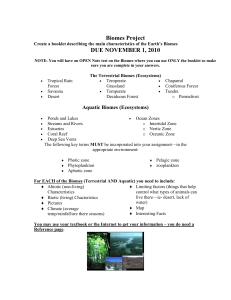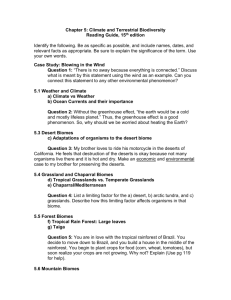Name BMA Midterm Study Guide **Answer the following on the
advertisement
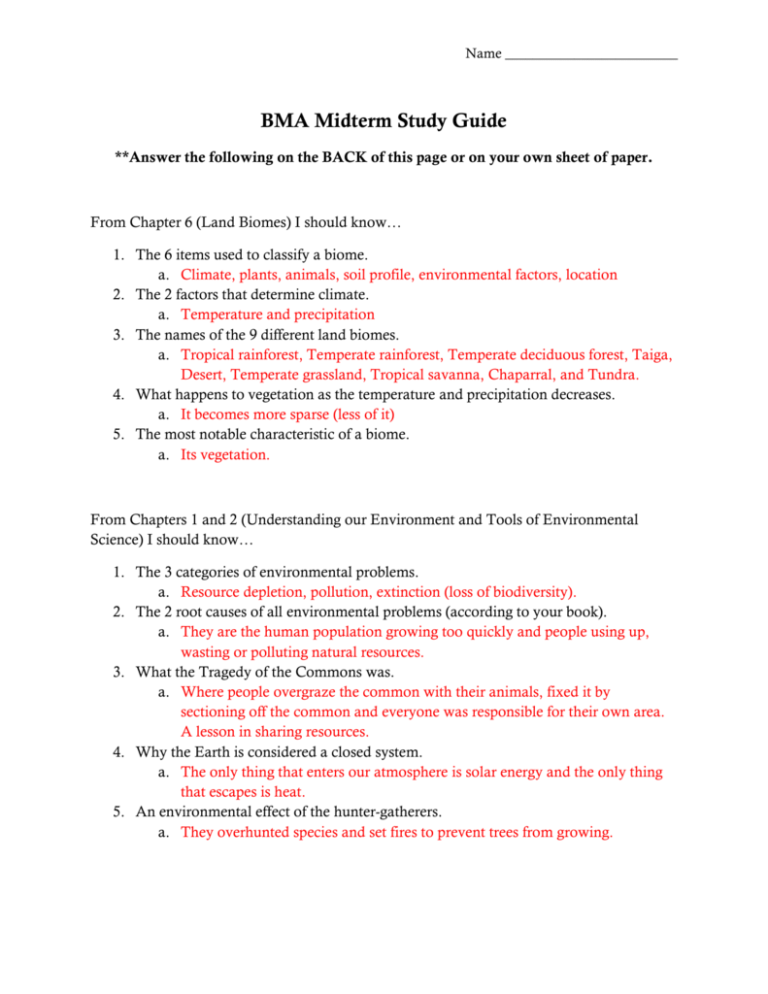
Name _________________________ BMA Midterm Study Guide **Answer the following on the BACK of this page or on your own sheet of paper. From Chapter 6 (Land Biomes) I should know… 1. The 6 items used to classify a biome. a. Climate, plants, animals, soil profile, environmental factors, location 2. The 2 factors that determine climate. a. Temperature and precipitation 3. The names of the 9 different land biomes. a. Tropical rainforest, Temperate rainforest, Temperate deciduous forest, Taiga, Desert, Temperate grassland, Tropical savanna, Chaparral, and Tundra. 4. What happens to vegetation as the temperature and precipitation decreases. a. It becomes more sparse (less of it) 5. The most notable characteristic of a biome. a. Its vegetation. From Chapters 1 and 2 (Understanding our Environment and Tools of Environmental Science) I should know… 1. The 3 categories of environmental problems. a. Resource depletion, pollution, extinction (loss of biodiversity). 2. The 2 root causes of all environmental problems (according to your book). a. They are the human population growing too quickly and people using up, wasting or polluting natural resources. 3. What the Tragedy of the Commons was. a. Where people overgraze the common with their animals, fixed it by sectioning off the common and everyone was responsible for their own area. A lesson in sharing resources. 4. Why the Earth is considered a closed system. a. The only thing that enters our atmosphere is solar energy and the only thing that escapes is heat. 5. An environmental effect of the hunter-gatherers. a. They overhunted species and set fires to prevent trees from growing. Name _________________________ From Chapter 7 (Aquatic Biomes) I should know… 1. The 4 factors that determine where organisms live in freshwater. a. Sunlight, temperature, oxygen and nutrients. 2. Difference between zooplankton and phytoplankton. a. Zooplankton are animals and phytoplankton are plants. 3. Why arctic ecosystems are considered marine ecosystems. a. They are considered marine ecosystems because plankton are the base of the food chain. 4. How eutrophication effects the organisms that live in the water a. Eutrophication increases the amount of nutrients in the water, which in turn depletes the oxygen in the water which leads to organisms dying off. 5. The major importance of wetlands. a. They act as sponges to remove and absorb polluntants from the water that flows through them. From Chapter 8 (Populations) I should know… 1. The 5 types of species interactions AND what happens in each. a. Mutualism (both benefit), commensalism (one benefits, other not affected), competition (both fight for a shared resource), predation (one kills and eats the other), parasitism (one lives off of and weakens the other). 2. The 3 properties that are used to describe populations. a. Density, dispersion and size. 3. What a carrying capacity is. a. The maximum population size that an ecosystem can support indefinitely. 4. When exponential growth takes place. a. Occurs when there is plenty of food and space, there is little or no competition and there are no predators. 5. What a territory is. a. It is an area defended by one or more individuals.




